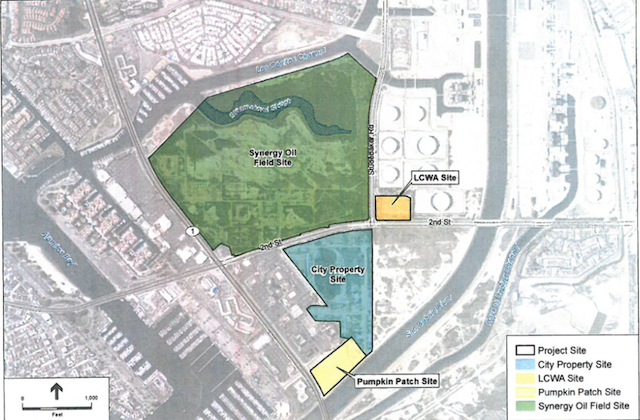
A deal that will see Long Beach exchange land with an oil company in return for wetlands restoration as well as permission to drill new oil wells moved one step closer to fruition as the city council voted 7-2 to approve environmental documents for the Los Cerritos Wetlands and Oil Consolidation Project.
The over four-hour discussion was just the latest in a series of heated hearings on the item that could see a large portion of wetlands in the city’s southeast restored but also the development of new oil wells in the area of 2nd and PCH.
{loadposition adfloatlarge}
Over the span of 44 years some 150 acres of wetlands will be restored under the proposed project as the current owner, the Beach Oil Minerals group, winds down operations on the wetlands and opens up dozens of new wells on land parcels across the street from the wetlands site.
Droves of community members, environmentalists and Native American tribal representatives spoke against the plan, which will include a 2,200-foot above-ground oil pipeline to connect the LCWA and pumpkin patch site, alleging all of which sit near an active fault line is an environmental disaster waiting to happen, but also that the project does not take into account the cultural importance of the wetlands to indigenous tribes of Long Beach.
However, the council and mayor saw the project as a one-time opportunity to transfer a large chunk of privately-owned land to the city with promises that it would be restored to its former glory.
“I understand the concerns of the community and some of the concerns that are associated because of the issue around oil,” said Mayor Robert Garcia. “But when I look at this map behind me, what I also see is a once-in-a-lifetime, literally, opportunity to acquire that parcel that is owned by Synergy. This is not an opportunity that we are going to get again in a generation or more.”
With the council’s vote—Councilmermbers Jeannine Pearce and Lena Gonzalez dissented—the project review now moves on to further scrutiny, including the California Coastal Commission as the site of the proposed land swap sits in the coastal zone.
If eventually approved, the expected changes—which include the removal of old wells and outdated equipment, the restoration of wetlands and the development of new wells at the current site of the Los Cerritos Wetlands Authority and the seasonal pumpkin patch—are expected to take place over the next four decades.
Over a potential 44-year window the site is expected to see the decommissioning of the older, outdated oil rigs that currently pepper the wetlands site and the construction of trails, a visitor center and an environmental facelift of what was previously used as an oil field. The majority of the removal of equipment is expected in the first few years of the project while the gradual phasing out of old wells is expected to take place between 20 and 40 years.
While most of the community agreed that wetlands restoration was an admirable goal, the idea that it should come at the cost of more oil production was a non-starter for most.
The item has been a contentious one for environmentalists in the city with similar showings of those against the project appearing at nearly every public meeting along the way. Last year, after the planning commission forwarded the environmental documents to the city council, a man opposed to the project allegedly attacked a member of the project team as they exited city hall.
While there were no physical attacks Tuesday night, the verbal barrage of commenters pushing for the council to stand up to big oil and to vote for the environment continued. Vice Mayor Rex Richardson asked what the city’s guiding principles were when it came to oil policy in the city, one that has touted itself as a leader in the green movement.
City staff stated that its about six months into an 18-month process of re-working Long Beach’s sustainable city documents, ones that were previously considered insufficient to meet its own green goals. However, the document as of now does not include an outright policy stance on oil but may include a holistic approach to climate change policy approaches including the modes in which people travel to the way they consume energy in their homes.
“We’re not going to change climate change on a project-by-project basis,” Richardson said prior to Tuesday night’s vote. “We have to have a plan. If we were today to ban oil drilling in Long Beach, we’re still going to have to purchase oil from other sources. The reality is that we need to have a larger broader conversation.”

